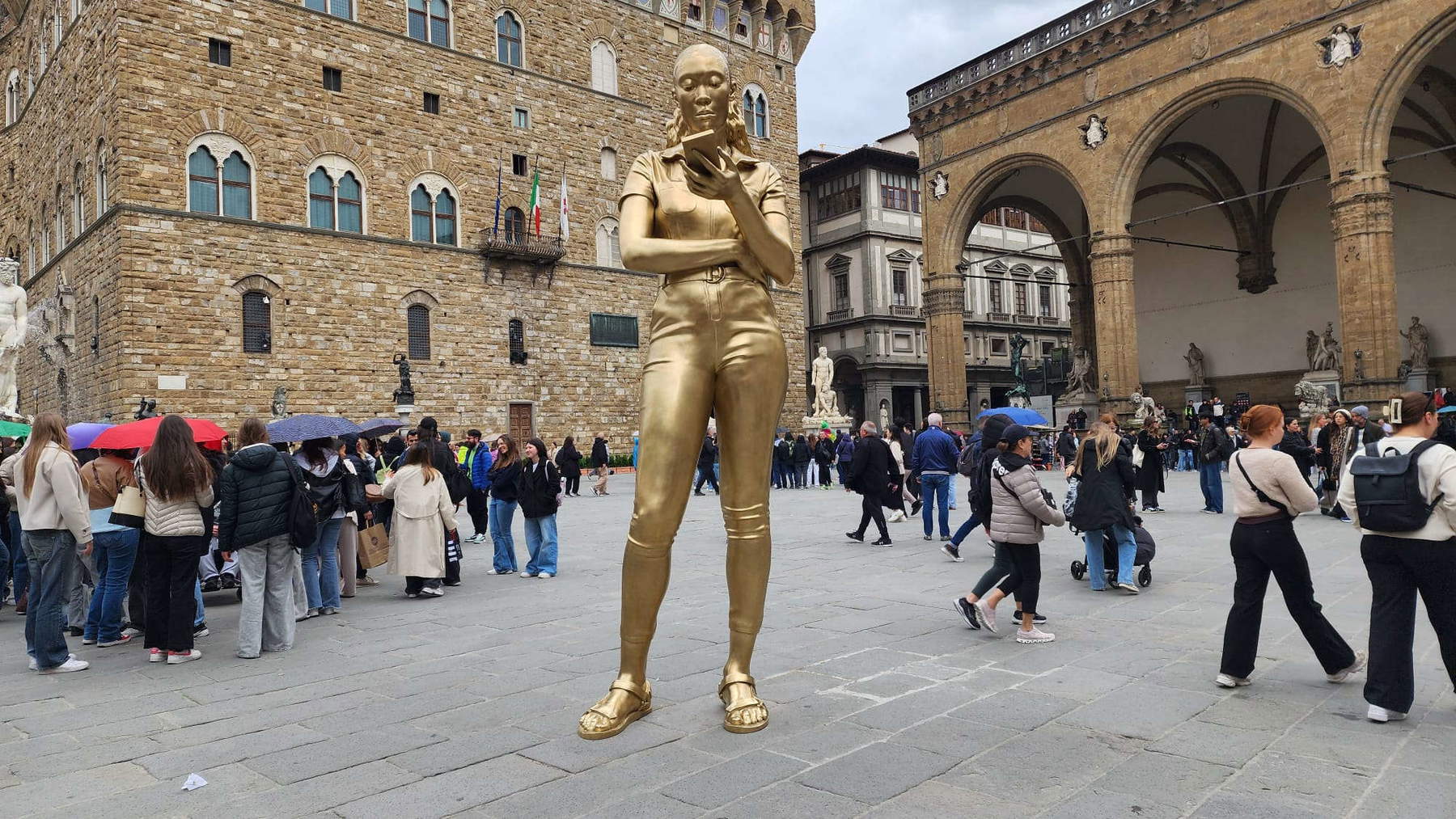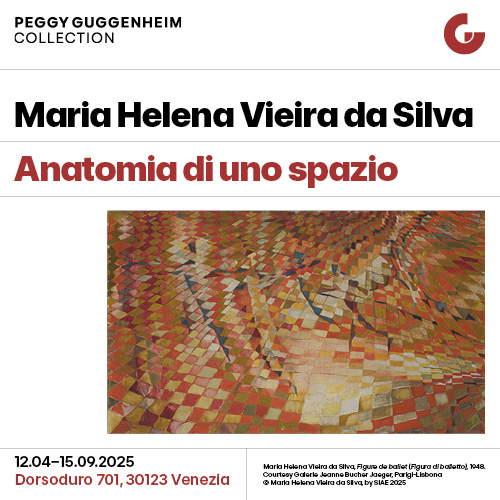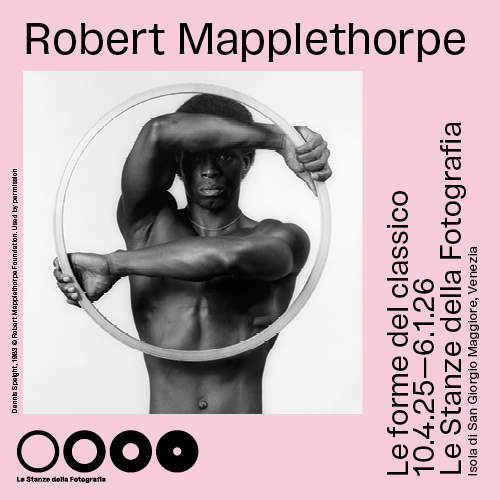Florence, the work of Thomas J. Price? A trivial rehash: the interesting topic is another
In Florence’s Piazza della Signoria for about five centuries, every day of the year, a clothed woman has been about to cut off the head of a man, inert and asleep at her feet, whose head she holds by the hair. If a feminist movement had wanted to choose a more effective image of protest against patriarchy, it could not have done better than Donatello’s Judith about to behead General Holofernes.
A little further on, a naked young man has just beheaded a woman, whose head he lifts aloft like a trophy-Cellini’s Perseus with Medusa’s head. Would this bloody image then be a representation of feminicide, while Giambologna’s not far away Rape of the Sabine Women a gendered violence? And if then, as a hysterical reaction, some nostalgic of patriarchy wanted to interpret Cellini’s Perseus as an act of revenge of the male against the violence of the woman, as if to avenge Holofernes killed by Judith, from distortion to distortion a real hermeneutical monster would emerge.
Discussed these days in the same square, in front of the same statues, is the case of yet another sculpture in which the issue of gender is joined by the more topical one of race, namely the statue of a black girl absorbed in looking at her cell phone, about four meters high, in gilded bronze, by British sculptor Thomas J. Price. The vexata questio is: can one claim that such a sculpture is ugly without being accused of racism and sexism? And since the artist is also black, does one run the risk of discriminating against the author as well?
Just as it would make no sense to say, as was recently written in a magazine, that it is a sculpture whose quality of work, plastic, and object would be “evident” (this revealed evidence would be based on what, the judgment of those who self-righteously claim to be “art critics”?), in the same way it would make no sense to say it is ugly. It is a sculpture of a black woman that echoes patterns already used in the past (in Italy, for example, by sculptors not particularly beloved by mainstream critics, such as Ugo Attardi in the 1970s and Giuseppe Bergomi in more recent times) and that comes in its hyperrealist style from Duan Hanson’s black women in the 1960s, intent on daily activities, with the difference that while the latter were life-size, Price’s are monumental.
So we could say that Price’s work is a rehash, unoriginal at heart, of what has already been done by other artists, adding that public sculptures of black women in bronze by the way already exist scattered around the world, such as Aleix Barbat’s 2008 The Bronze Woman at Stockwell Gardens in London or the one dedicated to Mary Jane Seacole in London since 2016 at St. Thomas Hospital. Thomas Hospital, to which the one of a black woman (a symbol of Africa) placed since 1863 in London on the 1851 Great Exhibition memorial monument would serve as a historical precedent. Price’s large sculpture would therefore not even be the first sculpture of a black woman to be placed in a public square: is the fact that it is only the first black woman placed in the Piazza della Signoria sufficient to deem it “revolutionary,” given that the statue itself traces academic, verist, socialist realist, and worn models? Can such antiquated language be revolutionary?

The gesture of two poor idiots who hung bananas around the neck of Price’s statue (a gesture as idiotic as taping a banana to the wall, displaying it, auctioning it and buying it for $6 million) is likely to distract us from asking the right questions. For example: was it necessary to place a sculpture so normalizing in itself in style, in the banality of its subject matter, in its lack of formal tension, in the very square that is home to masterpieces of statuary that have made the history of sculpture (hard to assume that Price’s girl will remain in the same story)? Is there a committee of museum directors, philosophers, historians and art critics behind these choices, selecting works according to certain parameters and shared cultural visions, paying attention to the fact, for such a sensitive public place, that between 2015 and 2025 out of 6 contemporary sculptures installed as many as 4 were from artists connected to the Gagosian Gallery (Price’s being the no less prestigious Hauser & Wirth gallery)?
Could it be that the gestures of the usual idiots, with the complicity of bona fide critics (but, as they say, the road to hell is paved with good intentions) are forcing us to always talk about the wrong things for the wrong reasons causing us to lose sight of what we should be seriously discussing? For example, that one can challenge an unoriginal sculpture from an art-historical point of view without offending what it represents but only its being a work of art out of place among Renaissance masterpieces, and that there is a difference between signifier and signified, form and content, sign and referent. Hanging bananas around the neck of a statue depicting a black girl (idiotic gesture) does not have the same semantic value as if the idiots had done it on a live girl (racist gesture).
So let us return to our Judith: can something more innovative, violent, modern, anti-rhetorical, revolutionary be done? This is the challenge for contemporary art, not to call in, to defend Price’s work, like a broken record, decolonization and civil rights, without perhaps having ever read Booker T. Washington, Frederick Douglass, Marcus Garvey, W.E.B. Du Bois, James Baldwin, Frantz Fanon, Léopold Senghor, Aimé Cesaire, Malcolm X, Huey Newton, Eldridge Cleaver, Angela Davis? And to find out, even through their writings, that it cannot be the statue produced by an artist (black or white it matters little at this point), who works for one of the most powerful art galleries in the West, in a city devoted entirely to international tourism (both expressions of contemporary consumerism), that can represent and resolve issues of exploitation and “colonial” domination (or whatever you want to call it). Paraphrasing Malcolm X, there are “backyard” sculptures and “country” sculptures: the former serve economic power and are complicit in colonial exploitation, the latter would like to tear it down: Price’s girl does not look like a “country” sculpture at all.
Warning: the translation into English of the original Italian article was created using automatic tools. We undertake to review all articles, but we do not guarantee the total absence of inaccuracies in the translation due to the program. You can find the original by clicking on the ITA button. If you find any mistake,please contact us.



























